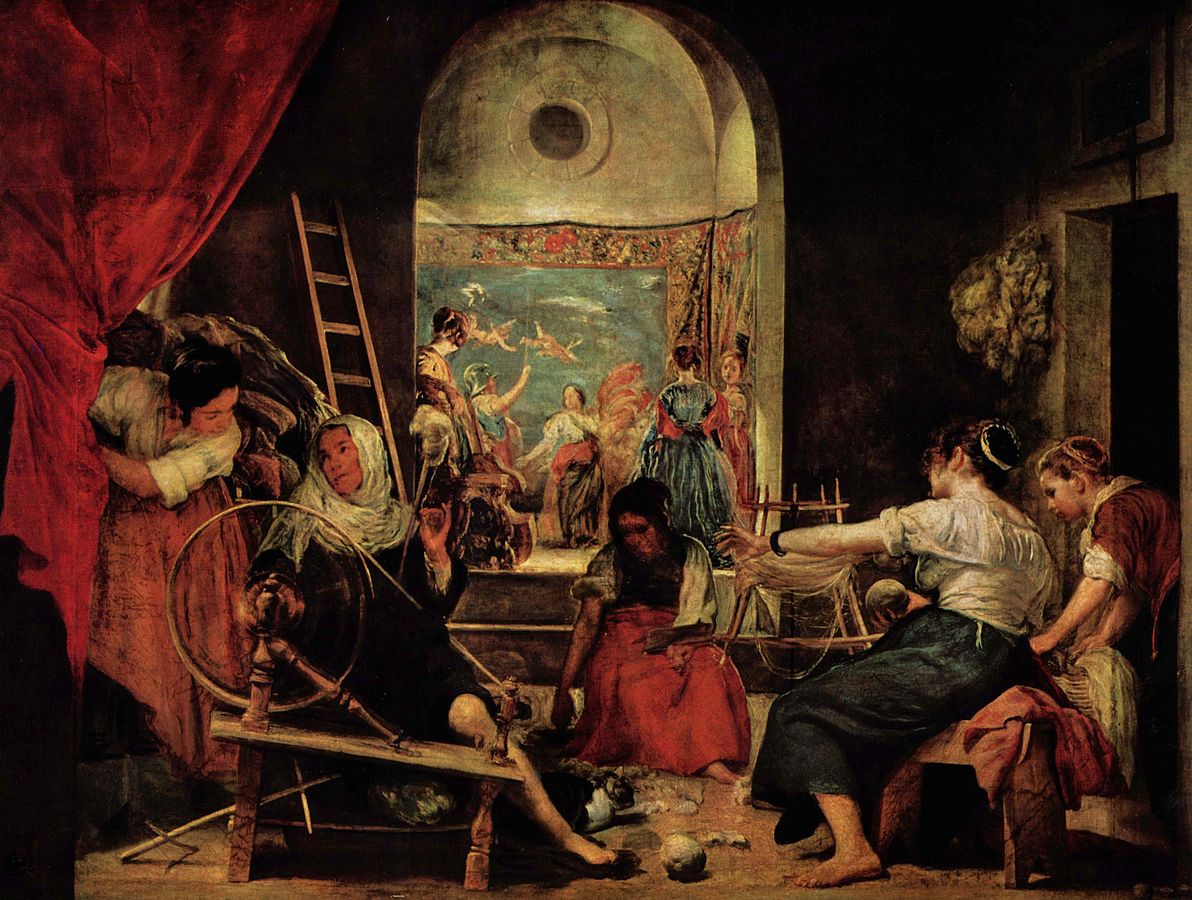
The Poetry in Metamorphosis
Tanya Schmidt '12
As summer tumbles into fall and the new school year begins at a sprint, I recall an image of transition described by first century Roman poet Ovid. In Book 6 of The Metamorphoses, Ovid compares the colors in tapestries woven by skilled Arachne and Minerva to a finely graded rainbow. Just as the colors closest together in a rainbow seem too alike to discern the transition between them, each shade of purple in the tapestry is so fine that it blends in with its neighbor. The Latin reads: “Transitus ipse tamen spectantia lumina fallit” — (my translation) the very passage deceives the eyes regarding it. “Quod tangit, idem est” — the thing which touches, is the same. “Tamen ultima distant” — nevertheless the farther things are different.

"Las Hilanderas," on display in Spain's Museo del Prado, Diego Velázquez's famous rendition of the weaving contest between Arachne and Minerva
In other words, looking at a small slice of the tapestry, one cannot observe the difference between the shades. Taking in the tapestry as a whole, however, one sees that the purple is distinct from the red. Ovid’s word choices reflect the initial blend, then separation. Through Latin poetic elison, the words “idem est” are pronounced as one, “idemst.” In the following line, the words remain separate. Ovid’s rainbow simile encourages distance to perceive clarity, but it also celebrates the art of being in the thick of laborious evolution.
The passage of progress is hard to notice from day to day, but as Ovid suggests, with some distance, transformation to a new color is clear.
The passage of progress is hard to notice from day to day, but as Ovid suggests, with some distance, transformation to a new color is clear. For example, athletes might have difficulty seeing hard work pay off at each practice, but the fruit of extra repetitions shows over time. In the intensive Latin program I attended for 12 hours a day, Monday through Friday, for 10 weeks this summer, we struggled to see improvement within each week. Time showed the passage of progress from confusion to familiarity.
I wonder what political, environmental, or social progress has also been so gradual that transition to it is hardly noticeable. I tend to think of landmark Supreme Court decisions, or “upset” political wins, as major overturns in policy, but perhaps they are better understood in context, as build-ups of changing attitudes over time.
This weekend, as I flipped through the Sunday Times at a favorite coffee shop in Greenwich Village, a neighbor at the shared wooden table remarked: “Nothing worth reading in the paper today, is there? Just the old stories of war, violence, crime.” I considered enthusing about fresh stories of survival, connection, and the arts. I simply nodded, overwhelmed that injustice stretches throughout the ages.
Change requires labor, but great poetry abounds in metamorphosis, in the gradual steps to reach something beautiful.
Nevertheless, like the shades of color in a complex tapestry, passages toward change are often subtle. Thinking about Ovid’s simile, I wonder if my approach to suffering in the world should be to encounter each story with full attention—not simply to avert my focus to positive, more easily digestible ones. Contemporary news might depress, but confronting reality allows us to be fully aware of the world’s greatest needs. Change requires labor, but great poetry abounds in metamorphosis, in the gradual steps to reach something beautiful. Before we know it, we might have weaved together a rainbow.
Does change feel abrupt or more gradual to you right now? What metamorphoses do you detect in your life?
Sep 21, 2015

